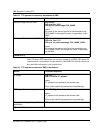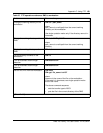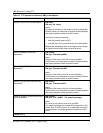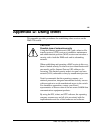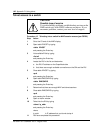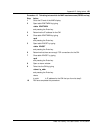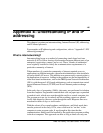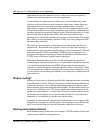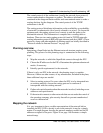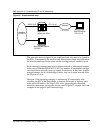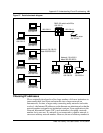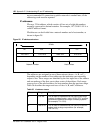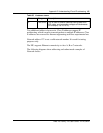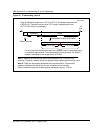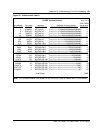
146 Appendix E: Understanding IP and IP addressing
297-8991-910 Standard 03.01 August 1999
application that the user needed to access. Otherwise, the user required a
separate line and terminal device for each application.
As the number of communications duties grew (such as addressing, route
selection, and error detection and correction), there came a point where the
applications had to be uncoupled from the communications “network.”
Specialized computers were created to take over the communications duties.
Termed front-end processors, these computers were actually communications
switches designed to convert the fast bus speeds of the host processor to slower
network link speeds. By the mid-1980s, most networks followed this
paradigm. It was about this time that various types of stand-alone LANs sprang
up to satisfy local requirements, but these LANs were rarely integrated with
the central host networks.
The majority of an enterprise’s networks are now interconnected into one
internetwork. The internetwork typically consists of a physical topology of
multiprotocol routers connected together using a wide assortment of LAN and
wide-area network (WAN) technologies. Multiple logical topologies are
overlaid on the physical topology to create the multiprotocol Internetwork.
TCP/IP is one of the more popular logical topologies.
What made Internetworking possible was the widespread acceptance of
connectionless network layer protocols. A connectionless datagram or packet
is a stand-alone protocol data unit (PDU) incorporating the information
required to route it through the internetwork from source to destination. There
is a fair amount of overhead associated with connectionless datagrams, but it
is a small trade-off considering the benefits over connection-oriented network
layer protocols.
What is routing?
Routing is the process of directing packet traffic between networks according
to predetermined criteria. The goal of routing is to make the most efficient use
of network resources. It does this by eliminating unnecessary packet copies
and forwarding packet data using the optimum path. The device that carries out
this process is called a router. The most common forwarding criterion is the
packet destination address. A router either discards or passes a packet, based
on whether the destination is on a known network (that is, a network that is
connected to, or reachable by, another port on the router).
In general, a router discards a packet if the packet protocol is not supported by
the router. For example, if a non-IP packet were introduced on an IP network,
an IP router on that network discards the packet rather than forward it.
Routing and routed protocols
Each internetworking architecture (for example, TCP/IP) includes at least one
routed protocol and one routing protocol.



